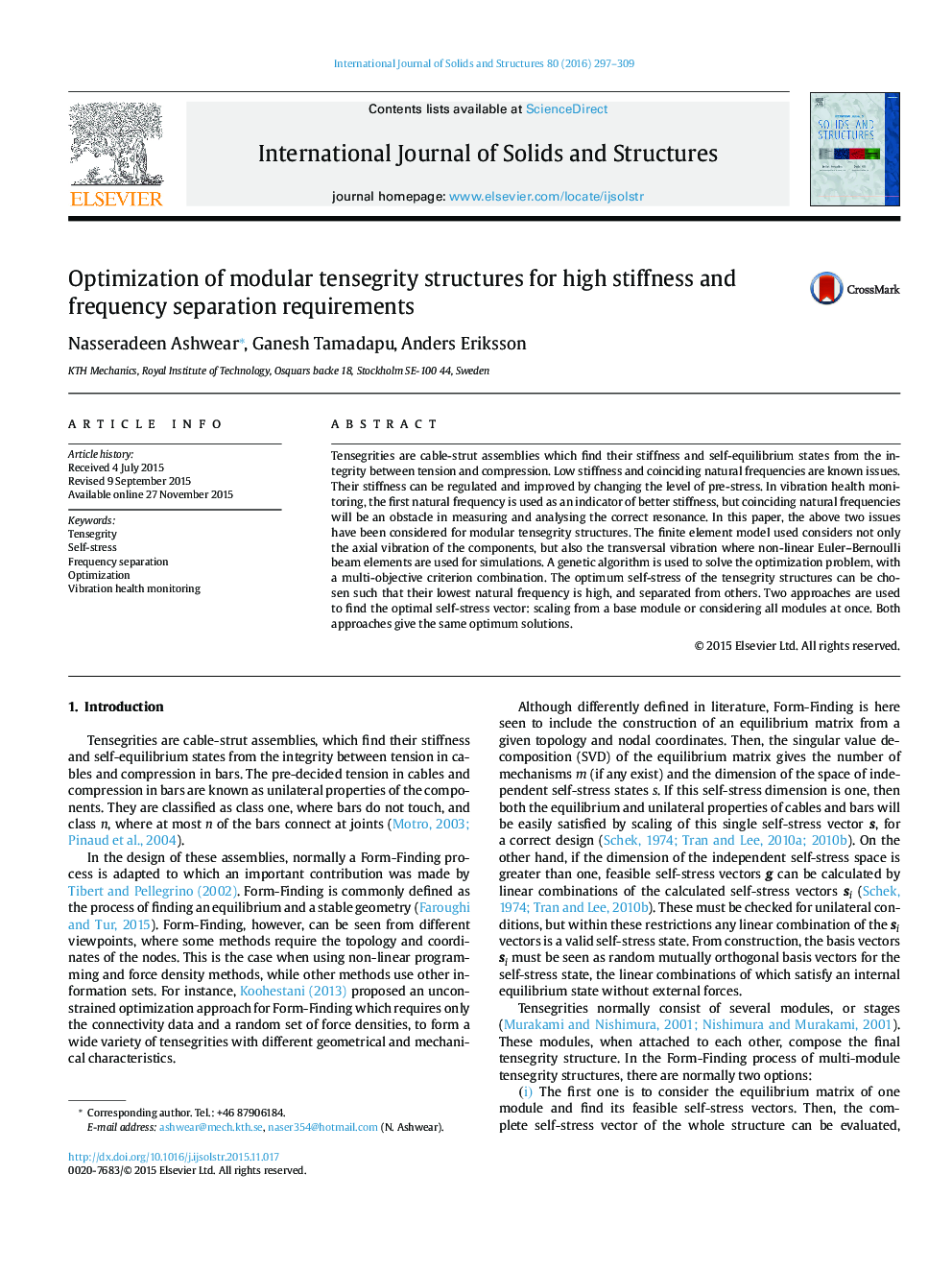| Article ID | Journal | Published Year | Pages | File Type |
|---|---|---|---|---|
| 6748618 | International Journal of Solids and Structures | 2016 | 13 Pages |
Abstract
Tensegrities are cable-strut assemblies which find their stiffness and self-equilibrium states from the integrity between tension and compression. Low stiffness and coinciding natural frequencies are known issues. Their stiffness can be regulated and improved by changing the level of pre-stress. In vibration health monitoring, the first natural frequency is used as an indicator of better stiffness, but coinciding natural frequencies will be an obstacle in measuring and analysing the correct resonance. In this paper, the above two issues have been considered for modular tensegrity structures. The finite element model used considers not only the axial vibration of the components, but also the transversal vibration where non-linear Euler-Bernoulli beam elements are used for simulations. A genetic algorithm is used to solve the optimization problem, with a multi-objective criterion combination. The optimum self-stress of the tensegrity structures can be chosen such that their lowest natural frequency is high, and separated from others. Two approaches are used to find the optimal self-stress vector: scaling from a base module or considering all modules at once. Both approaches give the same optimum solutions.
Keywords
Related Topics
Physical Sciences and Engineering
Engineering
Civil and Structural Engineering
Authors
Nasseradeen Ashwear, Ganesh Tamadapu, Anders Eriksson,
